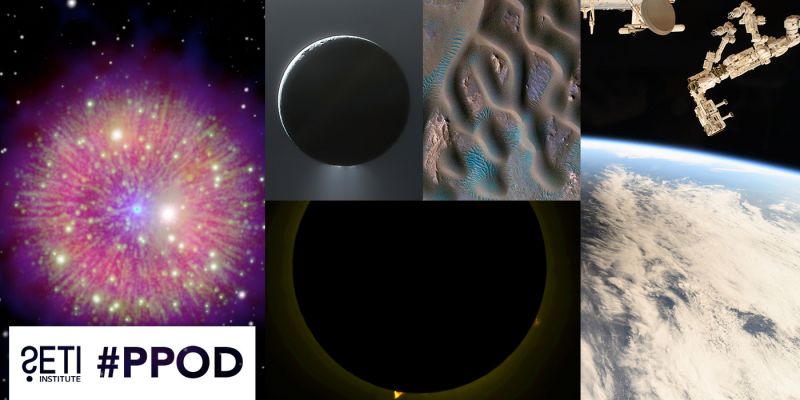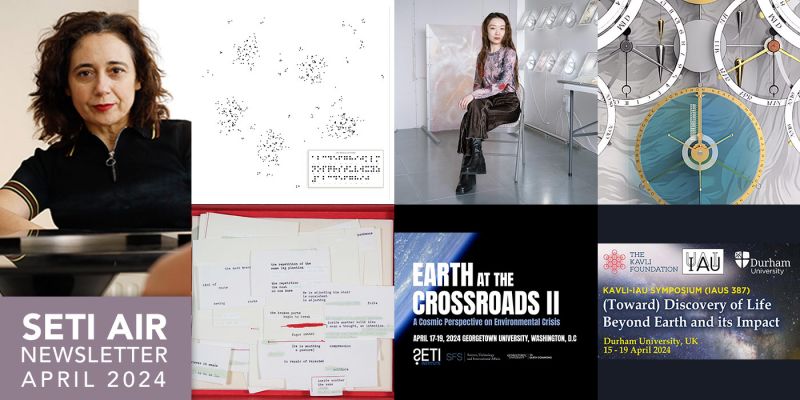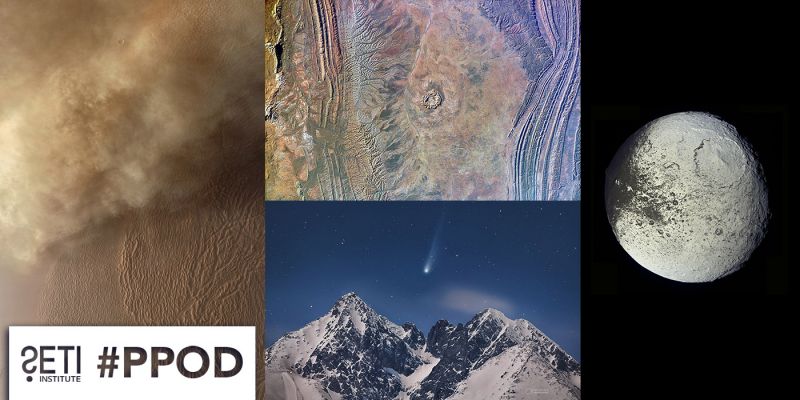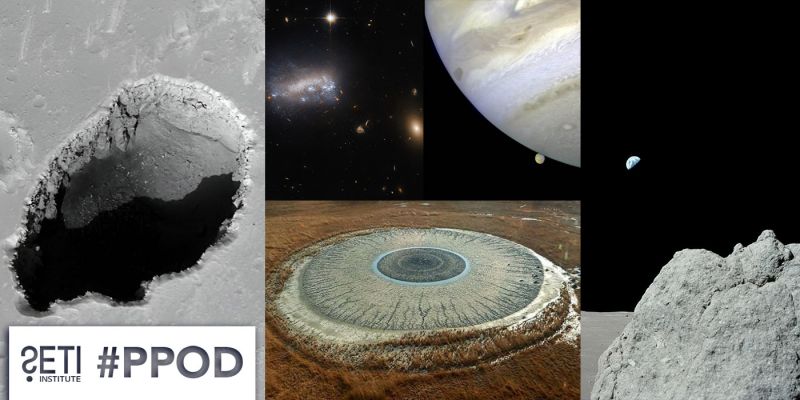
When NASA’s New Horizons spacecraft explored the Pluto system in July of 2015, it revealed the stunning complexity of Pluto’s surface for the first time. Researchers have been hard at work since, analyzing the data and attempting to uncover the processes that generated the distant world’s surface features. A recent study published in Science Advances reveals that the chemical signature of ammonia was detected interspersed with that of water ice, suggesting the possibility of cryovolcanoes, or ice volcanos. Cristina Dalle Ore, the lead author of the study and Senior Scientist at the SETI Institute, explained the process to Eos:
“The most likely emplacement mechanism…is that the ammonia–water liquid mixture found its way from the interior and was ‘sprayed’ in a neighborhood of about 200 kilometers from each ‘vent,’” lead author Cristina Dalle Ore, an astrophysicist at the SETI Institute in Mountain View, Calif., told Eos. “We call this mechanism cryovolcanism.”
“Ammonia mixed in water acts like an antifreeze,” she explained, “but is short-lived once it is exposed on a planetary surface”.
Further, the deposits are relatively recent:
“The ammonia molecule is fragile,” Dalle Ore explained, especially when mixed into water. “When exposed to ultraviolet or cosmic ray irradiation, [it] lasts only on the order of millions of years, a short time compared to the age of Pluto itself.”
“Having found ammonia mixed in water ice on the surface of Pluto implies that in the fairly recent past it was emplaced there,” she said.
Below the icy surface, liquid water might remain, but, as Dalle Ore told the International Business Times, “… the extent of this ocean remains unknown, it may consist of only a few pockets of liquid water, or it may constitute a watery layer under the entire surface of Pluto.”
- Eos: Ammonia Ice Deposits on Pluto Hint at Recent Cryovolcanism
- International Business Times: What Is a Cryovolcano? Mystery of Liquid Water on Frozen Pluto Revealed
- Space.com: On Icy Pluto, Volcanoes May Spout Liquid Water
- Science Advances: Detection of ammonia on Pluto’s surface in a region of geologically recent tectonism
- SETI.org: https://www.seti.org/ammonia-detected-surface-pluto
 Bacteria on the Moon
Bacteria on the MoonThe crew of Apollo 12 returned from their mission to the Moon in 1969 with a surprising find: a lunar probe called the Surveyor III seemed to have picked up some microbial stowaways from Earth that survived. The probe had been lying on the moon’s surface, exposed to space, for two and a half years, but testing back on Earth revealed the presence of a common bacterium. Presumably, the probe had been contaminated before the launch in 1967 and the microbes had survived – but scientists now think something was amiss. John Rummel, a senior scientist at the SETI Institute and former NASA Planetary Protection Officer, explained an alternative theory in a recent piece for Ozy:
Having spent more than a decade chasing down a hunch, he co-authored a 2011 report aimed, he says, at “setting the record straight.” After obtaining images from the inspection, he highlighted what might easily embarrass any modern researcher: Scientists scoping out the probe’s camera were working in short sleeves, and one of them even appeared to have touched a pair of pliers against his naked arm. “The only one out of 32 samples that had a positive result was taken with those pliers,” Rummel says.
While it may be possible that the bacteria survived all that time, it is very unlikely, according to SETI Institute senior astronomer Seth Shostak:
“Put whatever you like in a vacuum,” he says, “and you’ll find that it doesn’t do very well.”
Microbes have been found in remarkably harsh environments on Earth, and future missions to the Moon may yet reveal some surprising survivors.
 Protecting Mars from Ourselves
Protecting Mars from OurselvesThe exploration of Mars is an endeavor of great scientific significance to the SETI community. A key question is whether life exists, or ever existed, on the Red Planet, and the answer would have serious implications for the search for life elsewhere in the universe. Humans setting foot on Mars, a goal that tantalizes both NASA and private companies, presents serious challenges, not least of which is the danger of contaminating Mars with microbes from Earth. In a recent Discover Magazine article, the practical and ethical questions are explored. SETI Institute Senior Scientist John Rummel's ideas were detailed:
Former NASA Planetary Protection Officer John Rummel estimates that decontamination efforts raise the price of a mission by 14 percent, typically tens of millions of dollars — and that’s just for rover missions. However, he thinks it’s negligible next to the cost of contaminating Mars forever.
Contamination could ruin tests for indigenous organisms on Mars, or worse, Earth microbes could invade and wipe them out. Rules governing this aspect of planetary exploration were ratified by the United Nations in 1967. Some, including Margaret Race, a senior research scientist at the SETI Institute, contended, “We’re at the point where we have to update the rules of the road”, at a 2017 astrobiology conference. The scientific community and space industry continue to debate whether those regulations indeed need to be updated.
- Discover Magazine: Mars Doesn't Need Our Microbes: How to Keep the Red Planet Pristine
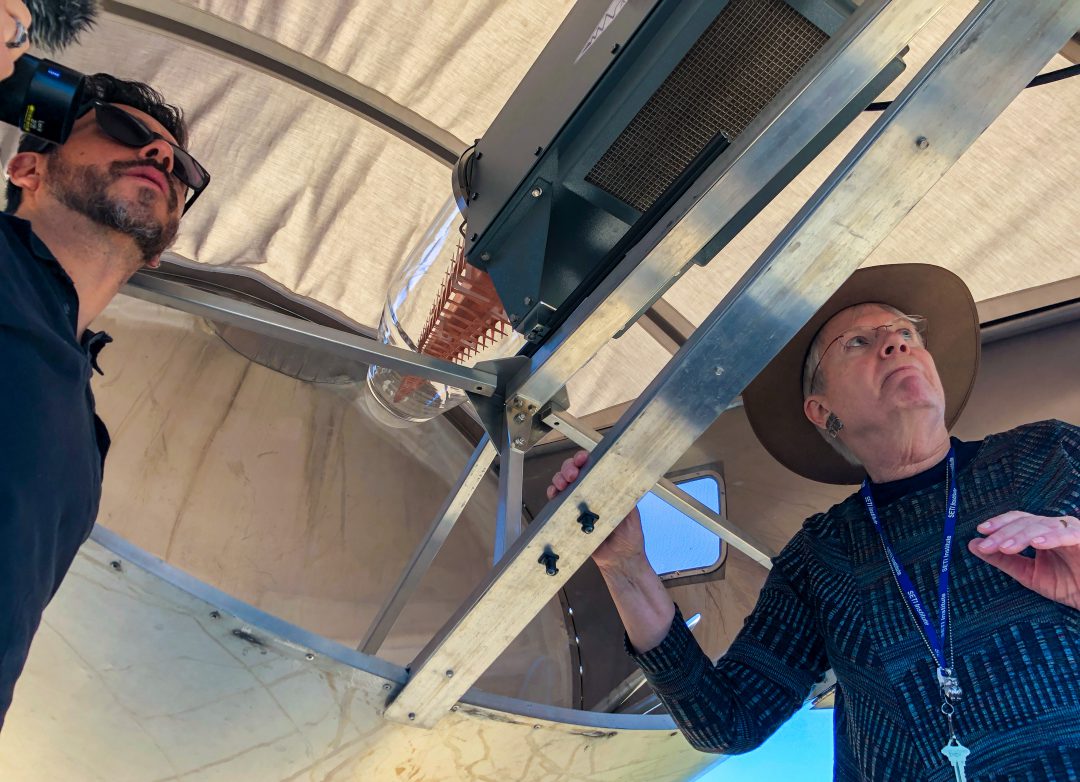 The Earthling Project: ‘A Global Sonic Message’
The Earthling Project: ‘A Global Sonic Message’Scientia featured an interview with Felipe Pérez Santiago, an acclaimed composer and SETI Institute Artist in Residence (SETI AIR). Santiago is bringing his talents as a sound artist to bear with the Earthling project, an ambitious endeavor to create “a global sonic message through online collective compositions that represents us as human beings in this moment of our history”. Santiago is working closely with Charles Lindsay, Director of SETI AIR, as well as SETI Institute co-founder and Chair Emeritus for SETI Research, Jill Tarter. People from around the world will be invited to send recordings and collaborate in crafting music for the project. Santiago notes that the message itself might be sent into space one day:
Sending music into space is a romantic and beautiful act, but since we don’t know for sure where or to whom we are sending it, it’s really about creating the message.
Music – and art in general – is a way of showing some of the best of our species, and if someone out there ‘listens’, it is a great presentation card.
Can you imagine thousands of people creating music together that represents us as human beings, as earthlings? I think is an amazing dream that I truly hope we can maketrue.
The SETI AIR program facilitates an exchange of ideas between artists and scientists, fostering inspiration and leading to new modes of understanding and expression. More than a dozen artists have developed new and compelling work in dialogue with SETI Institute scientists. You can find out more about Earthling, support the project, and learn more about SETI AIR at SETI.org.
- Scientia: The SETI Institute’s Earthling Project
- EarthlingProject.com: Music that Represents Humanity
- SETI.org: SETI AIR: SETI Institute’s Artists in Residence
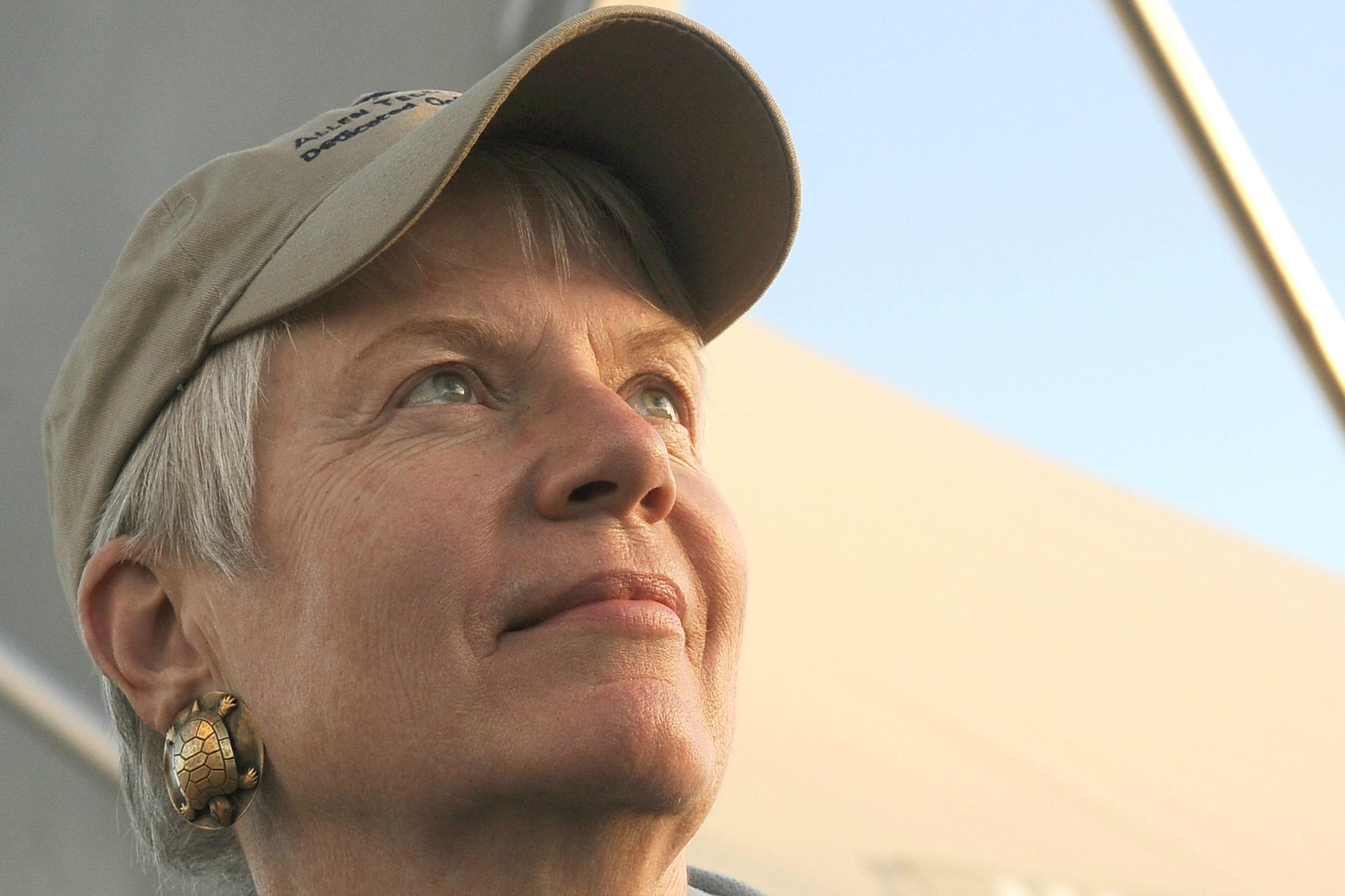 ‘We Are All Earthlings’: Jill Tarter to Join Space for Humanity’s Board
‘We Are All Earthlings’: Jill Tarter to Join Space for Humanity’s BoardSpace for Humanity, a non-profit dedicated to democratizing space travel and shaping future space policy towards inclusivity, has announced that Jill Tarter will join its Board of Advisers. Tarter is Chair Emeritus for SETI Research at SETI Institute and a pioneering astronomer, known in popular culture as the inspiration for the protagonist in Carl Sagan's novel "Contact" (and the film version starring Jodie Foster). Tarter’s work in SETI has garnered broad recognition in the scientific community, and she’s been a heartfelt advocate of science education through curriculum development and public talks. NewSpace International shared the announcement and Tarter’s view of the importance of SETI work for all of humanity:
“I believe the search for technological civilizations beyond Earth (SETI) can hold up a mirror to all people on our planet, a mirror that shows us we are all the same when compared with others who may have evolved elsewhere,” remarks Tarter. “We are all Earthlings. Trivializing the perceived differences among humans is what Space for Humanity can do as well, by providing the 'overview effect' to people from across the planet. Ultimately, we need to find ways for all of us to see ourselves in a much larger context if we are to achieve solutions to our global challenges.”
- New Space International: Space for Humanity Welcomes Jill Tarter to the Board of Advisers
- SETI.org: Scientist Interview - Jill Tarter - Beating the Odds
 Mark Showalter on 365 Days of Astronomy
Mark Showalter on 365 Days of AstronomySETI Institute senior research scientists and fellow Mark Showalter appeared on the community podcast 365 Days of Astronomy to talk about Neptunian moons, his work with NASA’s Cassini mission to Saturn, and the New Horizons mission to Pluto.
- 365 Days of Astronomy Podcast: May 3rd: Dr. Mark Showalter, SETI Institute
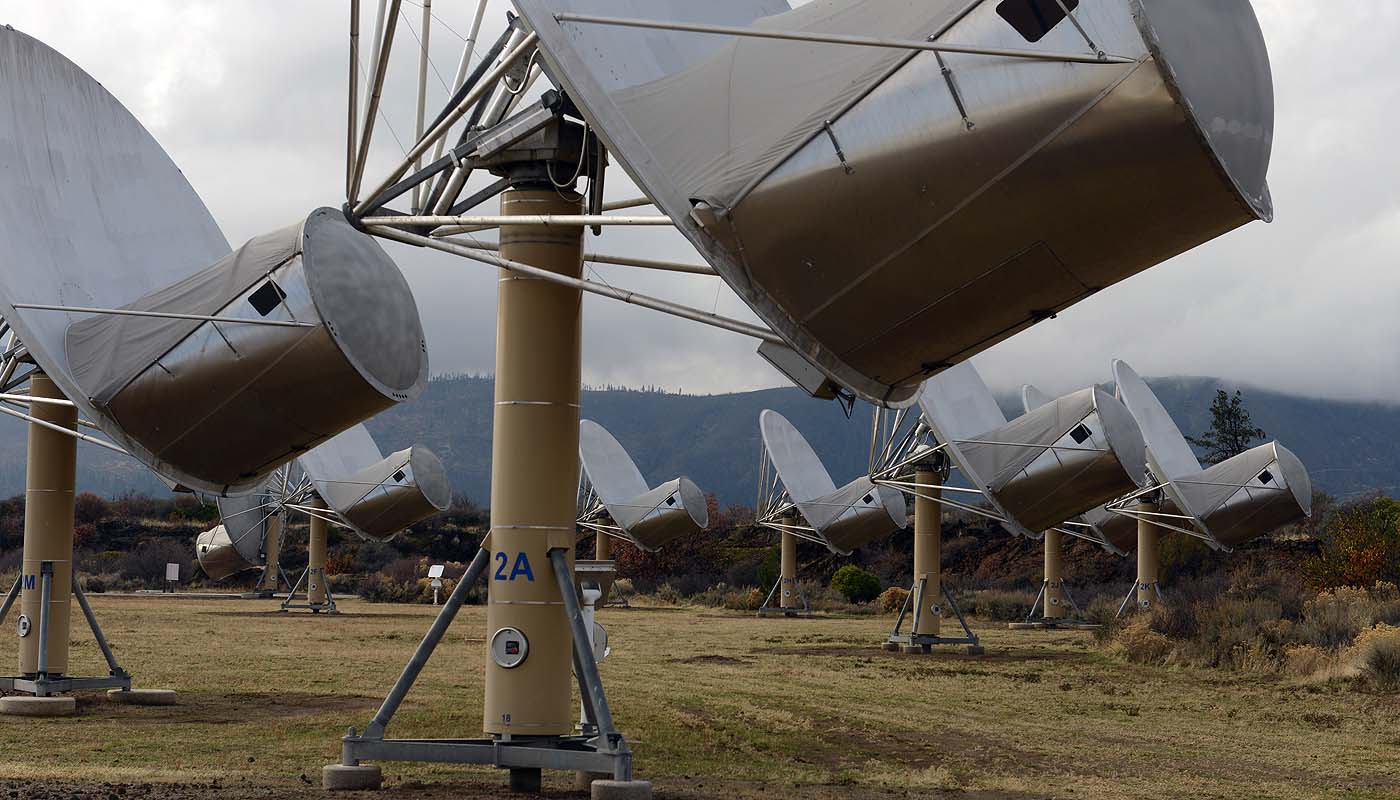 Searching for Life with the Allen Telescope Array
Searching for Life with the Allen Telescope ArrayThe search for extraterrestrial life is sometimes relegated to the realm of science fiction in the popular imagination, but it has been a fixture in modern science for quite some time. Radio astronomy, in particular, has been a cornerstone of SETI, as scientists attempt to pick up artificial broadcasts similar to those produced by human technology. The SETI Institute was highlighted in a recent CNet article discussing the topic:
The California-based SETI Institute is continuing this work. One of the leading agencies in the field of SETI research, the SETI Institute has a team of more than 80 researchers working across fields such as astronomy and astrobiology, and they continue to search for radio signals using their Allen Telescope Array located in California's Cascade Mountains. The Institute says we could well find signs of extraterrestrial intelligence in the next two decades.
The ATA was built by the SETI Institute with the generous support of Paul Allen. Numerous papers have been published reporting on observations made by the ATA.
 William Borucki on the Search for Exoplanets
William Borucki on the Search for ExoplanetsNASA’s Kepler space telescope launched in 2009 and detected over 2,000 exoplanets in the nine years it operated. William Borucki, the primary investigator for the mission and recipient of the SETI Institute’s 2016 Drake Award, spoke to Elsevier about the many people whose efforts made the project possible. Among them was Jill Tarter, Chair Emeritus for SETI Research at the SETI Institute:
We had a new division chief – Dave Morrison – who came into the organization, and as he got to know the goal of each person. He called me into his office and said, ‘Look, Bill, everyone agrees that what you’re doing is not going to work. However, I will set up a non-advocate committee – led by Jill Tarter, the former director of the Center for SETI Research – who will look at the project without bias and listen to your team’s reasons for continuing. If the committee decides in the negative, I will terminate the project.’
After the day-long presentation, the committee agreed that it might be successful. In fact, several of the committee members asked to join the team, and Dave Morrison said, ‘OK Bill – since they believe it could be successful, I’ll get you the funds you need to continue the development of the mission concept.’
Of the groundbreaking discoveries of the Kepler mission, perhaps the most significant to humanity is the knowledge that terrestrial worlds are not rare, but actually quite common in the universe. Research continues in the hope of determining if any of these worlds are habitable. Could there be life on other planets?
 Seth Shostak Visits Coding Bootcamp
Seth Shostak Visits Coding BootcampZip Code Wilmington, a coding boot camp school in Delaware, invited SETI Institute Senior Astronomer Seth Shostak to be a guest speaker in early May. Shostak noted that he’s optimistic about the odds of discovering other forms of intelligent life in the universe:
“It’s a numbers game,” Shostak said. “There are 2 trillion galaxies in the known universe. Not stars — galaxies. Each star has the potential to have an ‘Earth,'” or an inhabitable planet.
“If you believe we’re alone, you believe you’re a miracle,” he said. “Your parents may have told you you’re a miracle when you were 10, but that’s not a scientific conclusion.”
Shostak spoke about the use of computer technology, including AI and machine learning, in the search for life beyond Earth. He emphasized the growing importance of computer software and machine learning in scientific research, pointing to the alum present and saying “They’re going to be in the middle of it”.
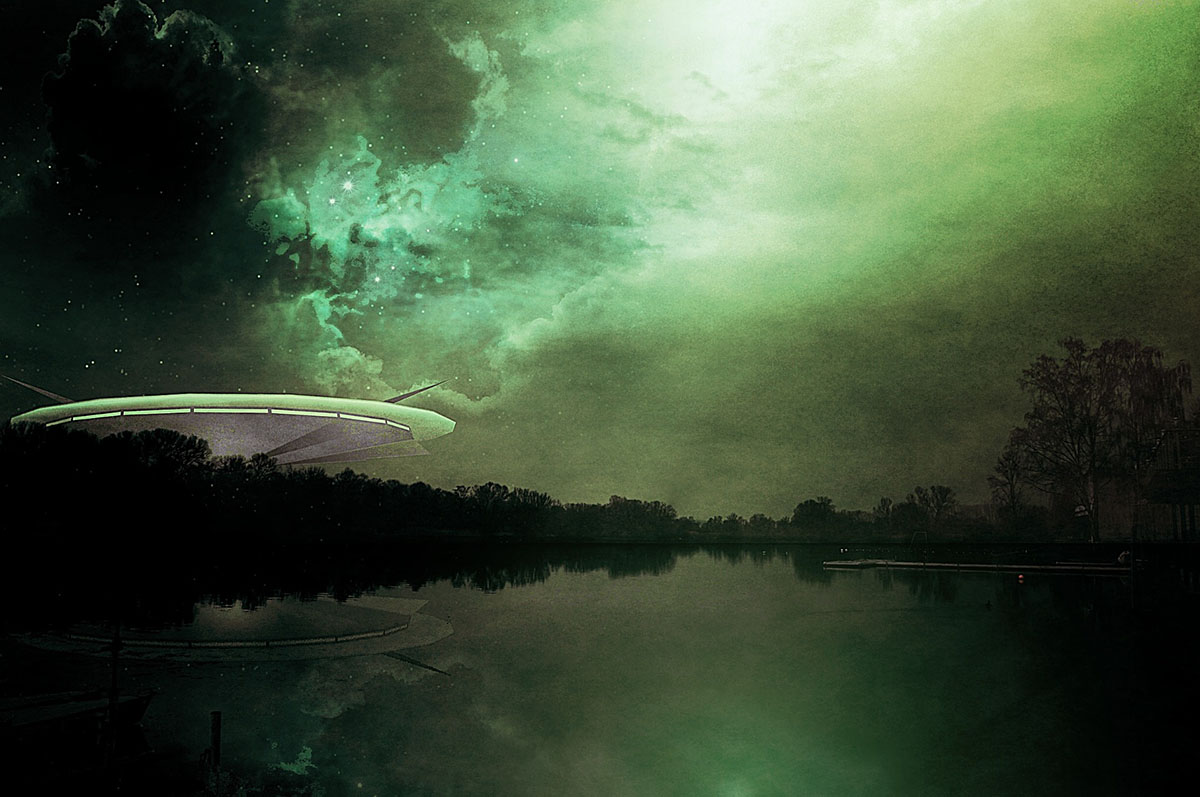 Alien Hybrids vs. Seth Shostak
Alien Hybrids vs. Seth ShostakAre aliens stealing humans for experimental breeding programs to combat climate change?
No, probably not. At least, not if you ask a scientist, as Seth Shostak, Senior Astronomer at the SETI Institute, wryly points out in an article for Seattle PI:
As you might expect, most scientists are dubious. After all, there’s never been any good evidence that the abductions are taking place. No one seems to bring along a cell phone to take photos, or pocket an artifact from the saucers.
Dr. Young-hae Chi, a Korean instructor at the University of Oxford in England, has a less conventional take. He has claimed that there is a correlation between the increasing number of alleged abductees and the rise of atmospheric greenhouse gases.
… Chi’s argument rests on the fact that two things have simultaneously increased in the past several decades: the number of reported abductions and the concentration of atmospheric carbon dioxide. Of course, many other things have risen during this time, too – including the price of bacon and the number of TV channels. It’s a big jump from a coincidence in timing to an alien project to produce a climate-resistant species.
While Chi seems to rely uncritically on abductee claims to support his hypothesis, scientific observation is needed to prove or disprove the claim; so far, no physical evidence is forthcoming. The challenge of climate change is unlikely to be solved by unprovable claims.
- SeatlePI.com:Alien abductions and climate change
In last week’s episode, interrogate scary statistics while avoiding the “intelligence trap”, in Skeptic Check: Worrier Mentality. On our previous week’s episode, find higher ground while you listen to the science of rising sea levels in an encore of New Water Worlds.
Last time on Facebook Live, SETI Institute senior astronomer Seth Shostak spoke with Ross Beyer, Oliver White, and Orkan Umurhan about Ultima Thule. Videos of all past Facebook Live events can be found on our Facebook page: https://www.facebook.com/SETIInstitute/
- Finding Aliens – An Update on the Search for Life in the Universe: June 6, 2019, Oxford, U.K. A public lecture by SETI Institute President and CEO Bill Diamond
- AlienCon 2019: June 21-23. 2019, Los Angeles, CA SETI Institute Senior Astronomer Seth Shostak is one of the featured speakers
- AbSciCon: June 24-28, 2019, Bellevue WA The SETI Institute will be a participating sponsor and numerous SETI Institute scientists will be presenting their work
- Starmus V – A Giant Leap: June 24-29, 2019: Zurich, Switzerland Jill Tarter, co-founder of the SETI Institute, is on the Starmus advisory board and will be one of the featured speakers
- IAU Chile: June 30-July 6, 2019, Copiapo, Chile SETI Institute research scientist Meng Jin will offer a talk: Coronal dimming as a proxy for stellar CMEs
- Astronomy Nights on Mount Tamalpais – Cassini’s Spectacular Final Year at Saturn: July 13, 2019, Mill Valley, CA SETI Institute senior research scientist Matthew Tiscareno is the scheduled speaker


